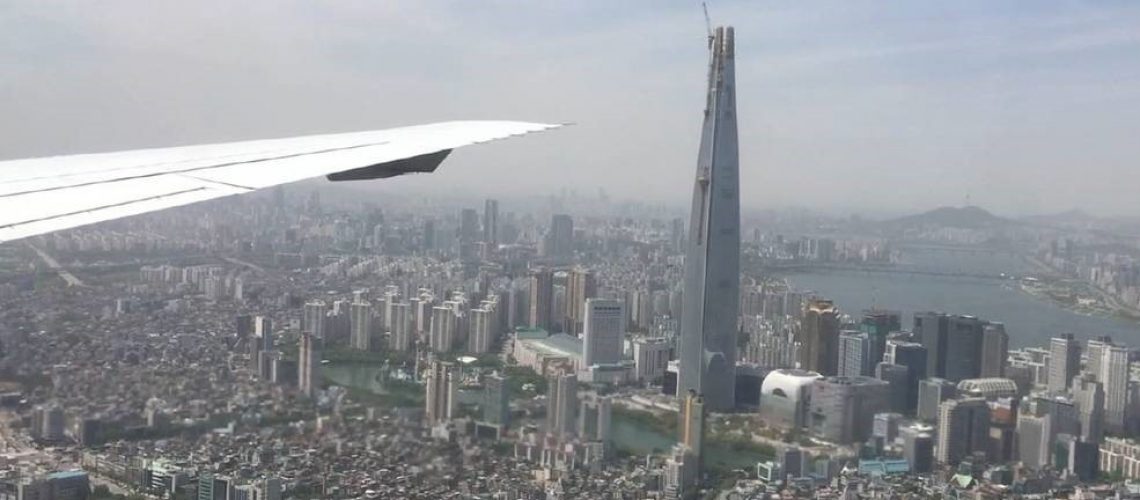By Michael Link, 2018-2019 Sustainability Leadership Fellow and Ph.D. Candidate in the Department of Chemistry
Seoul South Korea is the fifth most densely populated megacity in the world—home of Korean BBQ, K-pop and an air quality problem that seems to be getting worse every year. For years the South Korean government attributed poor air quality in Seoul to pollution transported from large, industrial cities on the eastern coast of China, but recent joint efforts by Korean and United States scientists have uncovered that the source of Seoul’s hazy skies is more local than previously thought.
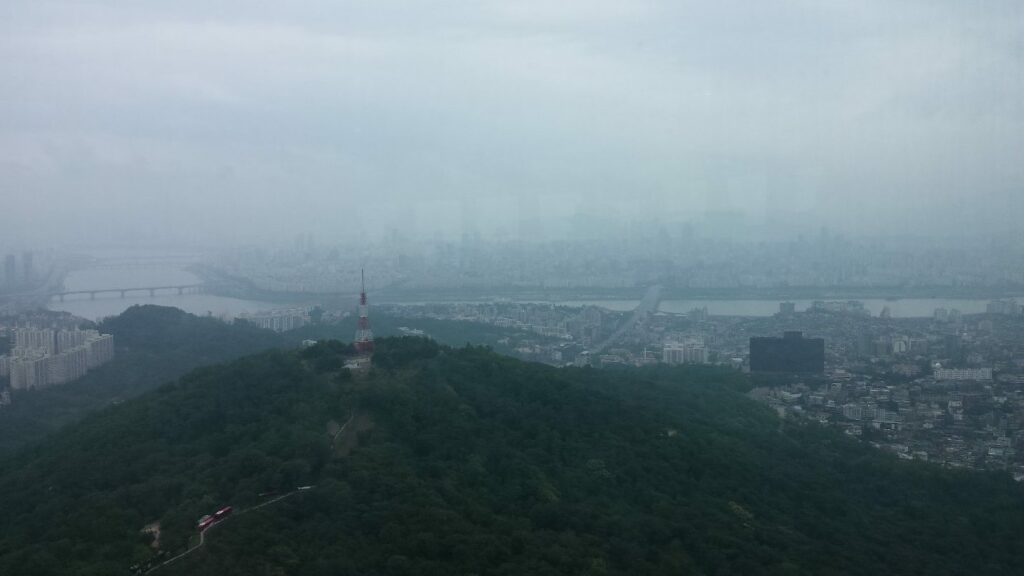
The problem of how air pollution is created and regulated is complicated no matter where you are on planet Earth. Particulate haze pollution, like the kind Seoul experiences, is created when two ingredients, volatile organic compounds and nitrogen oxides, react with one another in the presence of sunlight.
Volatile organic compounds are carbon-containing molecules that are emitted, as gases, to the atmosphere from a variety of sources including vegetation, automobile exhaust, industrial activity or even meat cooking. Nitrogen oxides are mostly emitted from automobiles and industrial activity. From a regulatory standpoint, these two ingredients basically represent knobs that can be adjusted to “turn up” or “turn down” the amount of air pollution being produced in the atmosphere on the regional scale.
When air pollution was starting to be addressed as a major problem in Seoul, around the year 2000, the Korean government enacted legislation that required industry—mostly power generation—to reduce the amount of nitrogen oxides and volatile organic compounds they were emitting to the atmosphere [1]. Additionally, all new vehicles were required to be equipped with cleaner emission technology and fuels were required to burn cleaner.
Although the goals and requirements of this legislation are more strict and ambitious than anything we currently have in the US, the clean air initiatives started in the early 2000’s have only resulted in a modest decrease of haze pollution in Korea [2]. Much of the blame for the continuing problem has been directed towards China.
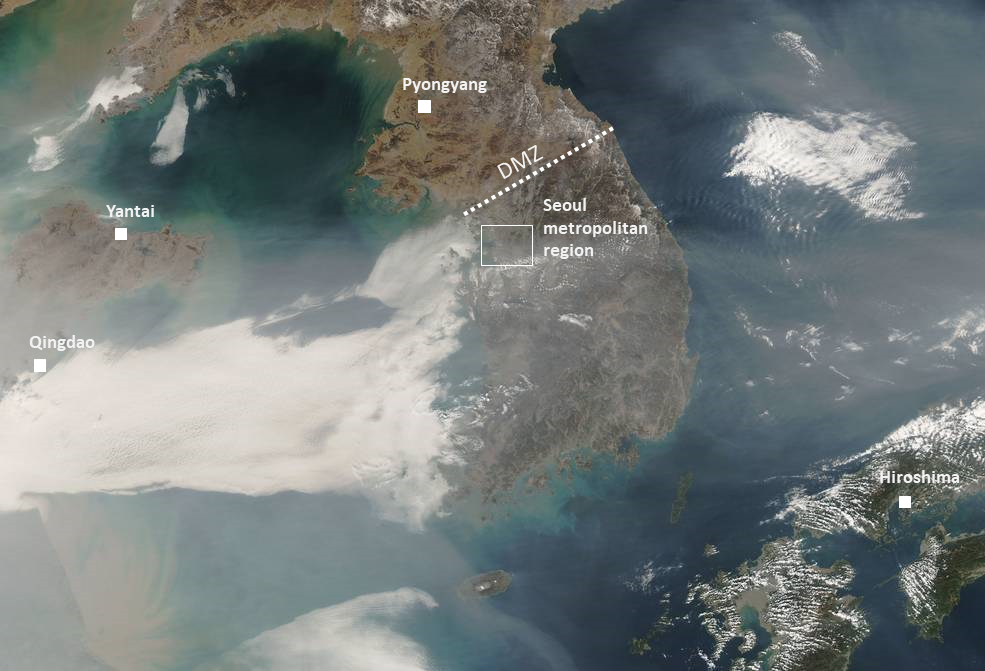
The intercontinental transport of pollution from large industrial cities, like Shanghai or Nanjing, on the eastern coast of China is a global problem well documented by satellite images (seen in this impressive video from NASA). The migration of Chinese pollution to the Korean peninsula is undeniable, but the extent to which it is responsible for the persistent air pollution that Seoul experiences has been a point of contention in Korea-China relations.
In the summer of 2016, US scientists from the National Aeronautics and Space Administration (NASA) partnered with the Korean National Institutes for Environmental Research to determine who was most responsible for Seoul’s air pollution mess. Two decommissioned military aircraft were equipped with millions of dollars of pollution measuring instrumentation and flown across the Korean peninsula for the entire summer. The planes were able to fly close to power plants, urban areas and over remote forested parts of Korea to create detailed maps of volatile organic compounds, nitrogen oxides and particulate haze.
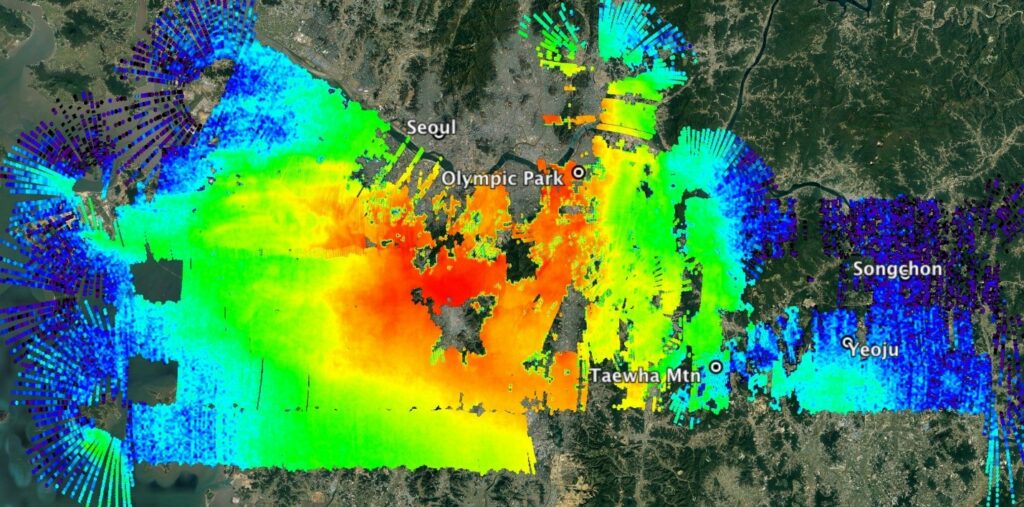
In the two years since these measurements were taken, results suggest that much of the persistent haze problem in Seoul is from sources local to Seoul and the surrounding areas. However, scientists also determined that in more rural parts of Korea, set apart from large urban centers, pollution transported from China is most likely to be the primary source of local air pollution [3].
The difference in the importance of regional versus intercontinental sources to local air pollution in Korea demonstrates the complexity of pursuing efficient air quality improvement policies. The aircraft studies showed that for reducing air pollution in Seoul, certain volatile organic compounds—such as toluene (a common component of gasoline)—could be targeted for specific emission reductions. Reducing emissions domestically, while challenging, is a straight-forward solution for improving air quality compared to a diplomatic negotiation with China.
It may surprise many folks to learn that the US was in a similar situation with Canada back in the late 70s and early 80s. Industrial emissions in the northeastern US were crossing the border into Canada resulting in acid rain that severely damaged forests and destroyed ecosystems by acidifying lakes [4]. Intense pressure from the Canadian government promoted the establishment of programs to mitigate acid rain from US emissions. Unfortunately, these amendments to the Clean Air Act weren’t enacted until 1990—a little more than over a decade after the problem was first recognized.
In light of record high levels of particulate haze pollution experienced in Seoul this past summer, the Korea government has been meeting with Chinese delegations to try to solve this intercontinental air pollution problem. Because of the US-Korean collaborative research efforts conducted in the summer of 2016, Korean officials can report that imported Chinese particulate haze pollution accounts for 34% of the total haze pollution observed on the Korean peninsula [5]. Quantitatively allocating responsibility for the air pollution problem is an important first step towards coming to a bilateral solution.
As humans we can’t escape the fact that we share the air with every other organism on the planet. As the transcontinental air pollution between China and Korea demonstrates, not just individuals but nations must share the responsibility of working together towards the common goal of clean, breathable air. International research collaborations – such as this partnership between the US and Korea – provide a foundation of facts that can establish common ground for the negotiations that must come next. As of this past summer, the results from this valuable research have helped turn what once was two countries blaming one another for an air pollution problem into meetings centering around collaborative solutions to a shared problem [6].
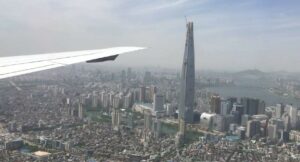
[1] Ministry of the Environment, Republic of Korea: The Air Quality Improvement Measures in Seoul Metropolitan Area. (2015), presentation access: https://hls-esc.org/documents/6hlsesc/B_Korea.pdf.
[2] Ahmed, E., et al.: Long-term trend of airborne particulate matter in Seoul, Korea from 2004 to 2013. (2015), Atmos. Environ.
[3] Nault, B., et al.: Secondary Organic Aerosol Production from Local Emissions Dominates the Organic Aerosol Budget over Seoul, South Korea, during KORUS-AQ. (2018), Atmos. Chem. Phys.
[4] Margot Hornblower: Canadians Want a Treaty To Reduce U.S. Acid Rain. (1979) The Washington Post.
[5] Esther Chung: China, Korea meet to focus on problem of air pollution. (2018) Korea JoongAng Daily.
[6] Moon calls for China’s cooperation to reduce fine dust. (2018), Yonhap News
